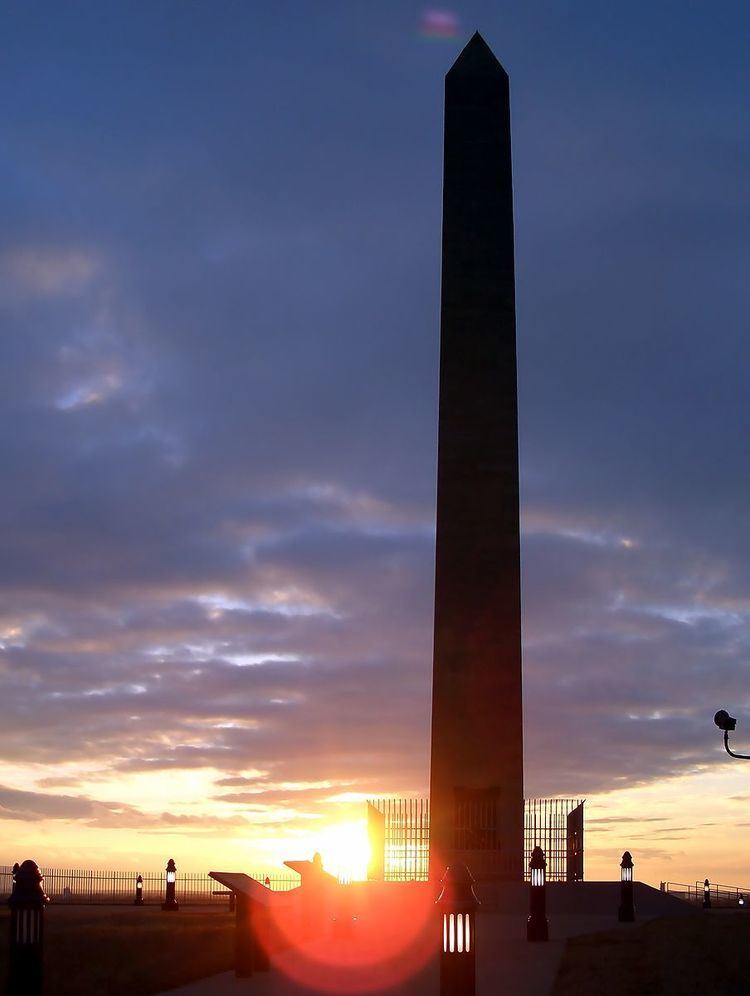Designated NHL June 30, 1960 Added to NRHP 15 October 1966 | NRHP Reference # 66000340 Phone +1 202-354-2211 | |
 | ||
Built Original Memorial: 1804Current Memorial: 1901 Address 2601 S Lewis Blvd, Sioux City, IA 51103, USA Hours Open today · Open 24 hoursWednesdayOpen 24 hoursThursdayOpen 24 hoursFridayOpen 24 hoursSaturdayOpen 24 hoursSundayOpen 24 hoursMondayOpen 24 hoursTuesdayOpen 24 hoursSuggest an edit Similar Sergeant Floyd, Lewis & Clark Interpretiv, Stone State Park, Sioux City Art Center, Sioux City Public Museum | ||
Sergeant floyd monument sioux city iowa
The Sergeant Floyd Monument is a monument on the Missouri River at Floyd's Bluff in Sioux City, Iowa, USA. The monument honors Charles Floyd, a member of the Lewis and Clark Expedition, who died on the upstream voyage in 1804 and was buried here.
Contents
The monument is the first designated National Historic Landmark of the United States.
History
Charles Floyd (1782 – 1804) was a United States explorer, a non-commissioned officer and quartermaster in the Lewis and Clark Expedition. A native of Kentucky, he was a relative of William Clark. He was one of the first men to join the expedition.
While exploring the Louisiana Purchase with Lewis and Clark, Floyd took ill at the end of July 1804. On July 31, Floyd wrote in his diary, "I am very sick and has been for sometime but have recovered my health again." However, this apparent recovery was soon followed by a severe turn for the worse. William Clark described his colleague's death as one "with a great deal of composure", and said that before Floyd died, he told Clark: "I am going away. I want you to write me a letter." The sergeant died on August 20. The expedition held a funeral and buried Floyd on a bluff overlooking the Missouri River; they named it Floyd's Bluff in his honor.
Clark diagnosed Floyd's illness as bilious colic, though modern doctors and historians agree Floyd's death was more likely to have been caused by a ruptured appendix. The brief "recovery" Floyd described may have represented the temporary relief afforded by the bursting of the organ, which would have been followed by a fatal peritonitis. Because there was no known cure for appendicitis at that time, he could not have been saved by even the best physicians of the day.
By 1857, erosion had caused much of Floyd's grave—even the original cedar post marker left by the crew of the expedition—to slide into the river and wash away. Concerned citizens rescued most of his skeleton, including his skull, and re-buried it 200 meters east of the original burial site. A forensic reconstruction of Sgt. Floyd's probable facial appearance based on a plaster cast of his skull is on display at the Sergeant Floyd Riverboat Museum in Sioux City.
After Floyd's expedition journal was published in 1894, new interest was taken in him. His gravemarker was stolen by thieves. Floyd's remains were reinterred once more on August 20, 1895 with a monument. A marble cornerstone three feet wide and seven feet long was placed in 1900. When the obelisk of white sandstone standing 100 feet (30 m) high was completed on May 30, 1901, Floyd's grave was moved for the fourth time to rest nearby, where it remains to this day. In 1960, the monument was recognized by the U.S. Department of Interior as the first National Historic Landmark. It was designated a National Historic Landmark on June 30, 1960.
The Floyd Monument is now within a 23-acre (93,000 m2) park that offers visitors a splendid view of the Missouri River valley. Floyd's final resting place is located on old U.S. Highway 75, in the southern part of Sioux City, Iowa.
